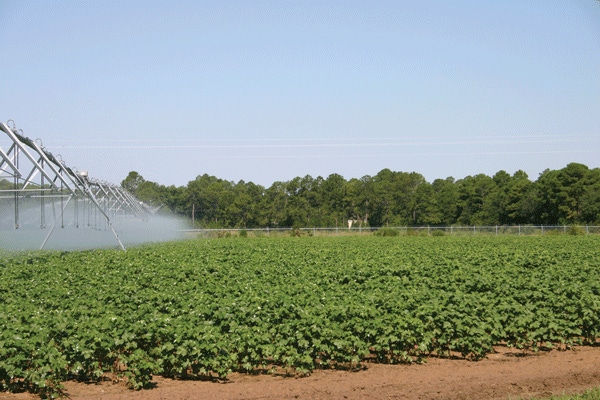December 20, 2010

Computerized expert systems for various farming operations like irrigation have been around for a number of years now, but they’re continually being updated, evolving with the needs of growers.
“We want the software to meet the needs of producers,” says Staci Ingram, technician with the National Peanut Research Laboratory in Dawson, Ga., which has created several such programs, including Irrigator Pro for peanuts, cotton and corn.
“Irrigator Pro for peanuts was developed more than 20 years ago,” says Ingram. “We’re looking at taking a conservation-minded approach to irrigation by meeting the physiological needs of the plant, but not using more water than is necessary.”
This particular system is designed to manage peanut irrigation and pest management decisions. The objective is to improve economic returns for irrigated peanut production and reduce risks associated with aflatoxin, foreign materials, immaturity, off-flavor, chemical residues, and negative environmental impacts.
Irrigation recommendations, explains Ingram, are based upon more than 25 years of scientific research data and information. To begin the program, growers enter field data including planting date, variety planted, previous crop, soil type and irrigation capacity.
Then, they place a digital minimum/maximum soil thermometer in the field, in the row, a few weeks after the crop has emerged. They also place a rain gauge in this same area as well as outside the pivot to record rainfall. The sensors in the field should be marked with flags because they will be difficult to find later in the season.
Users of the program begin by taking soil temperature readings a couple of times per week and asking for the recommendation which will advise if and how much to irrigate or when to check soil temperatures again.
Generally, irrigation recommendations are made to maintain soil temperatures and water in the optimum ranges. The program generates graphs showing data in relation to optimum and minimum zones, helping diagnose problems that may occur.
Extensivley evaluated, validated
Irrigator Pro for peanuts, says Ingram, has been extensively evaluated and validated in replicated research plots as well as commercial trials with cooperating farmers. Yield increases of more than 300 pounds per acre and 2 percentage point increases in Sound Mature Kernels and Sound Splits have been demonstrated. The program has been validated in all major U.S. peanut-producing regions, and recommendations are specific to growing regions.
Requirements to run Irrigator Pro for peanuts include a computer with 12 MB of free disk space running Windows 2000, Windows XP, or Windows Vista; one or two maximum-minimum weatherproof 4-inch stem thermometers; two rain gauges, one under the pivot and one outside the pivot; a soil penetrometer rod; and flags to mark locations in the field
Irrigator Pro for Cotton and Corn have also been developed and validated and have recently gained significant adoption, says Ingram. The requirements vary from the peanut model with installation of three soil moisture sensors at depths of 8 inches, 16 inches and 24 inches. Readings are taken during the season to collect the data to be input into the model to generate recommendations.
Growers should follow manufacturers’ preparation and installation recommendations that accompany the sensors, test them, and then install at depths of 8, 16 and 24 inches in the row, after the crop has emerged. Rainfall events should be recorded from the day of planting until sensors are installed and readings are entered.
Data specific to each field is required such as soil type and irrigation capacity.
To begin entering data, growers simply enter farm information, then individual fields, and the data for those fields as it occurs. When sensor readings are entered, recommendations can be retrieved advising if and/or when to irrigate, an amount, and when to check the sensors again. A comment section is also included for any information that you may want to reference later in the season.
Another computerized expert system — MoisMis — was developed for Alabama corn, cotton and peanuts, using more than 20 years of field irrigation experience by Auburn University Extension engineers in both north and south Alabama. The program also should be adaptable to neighboring states in the Southeast U.S.
MoisMis 2020 is an Xcel spreadsheet and workbook that operates in Xcel 2007 but is also compatible with Xcel 97-2003.
The program uses Daily Data inputs of rainfall, irrigation and soil moisture tension (SMT) at 9 inches and 18 inches with crop water-use curves to schedule irrigation up to five days in the future. Rainfall and SMT inputs are needed only two times per week, three to four days apart.
About the Author(s)
You May Also Like




